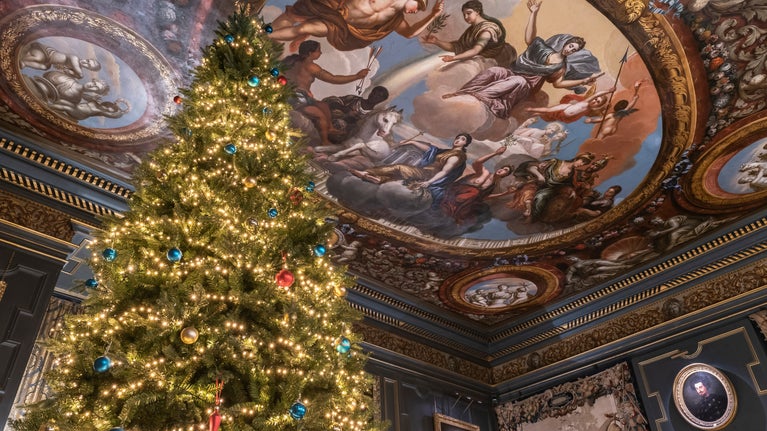
Immerse yourself in history
Meet people from the centuries gone by, learn about the unique artworks in our care and understand more about historic traditions.

The birth of Jesus has long been celebrated in song, and Christmas carols are so well loved now that they’re at the very heart of seasonal tradition. But many of the texts, tunes and conventions of today’s Christmas carols owe more to the innovations and tastes of the 19th and early 20th centuries than they do to the medieval period.
Strictly speaking, the original English ‘carol’ was a musical setting of a strophic poem beginning with a refrain (called a ‘burden’), which was repeated after each stanza.
Early written sources dating from around the 15th century suggest the carol was a product of the sophisticated musical culture of the late Middle Ages. They began as dance melodies and were eventually adopted as a model for other sacred choral works.
The texts of many medieval carols focus on the Virgin Mary or on the birth of Christ but they were not by definition used in Church (except perhaps in certain processions). Instead they were celebratory and devotional works. Many medieval carols adopted texts containing both Latin and English text and some of these lyrics have subsequently been used by more recent composers.
After the Reformation, this carol tradition became dormant and was swept away by the more vernacular or ‘folk’ music of the period.
In the 19th century, the restoration of the church choir and the revival of the hymn by John Mason Neale, Thomas Helmore and others was accompanied by a renewed interest in setting old carol texts to new music, producing more texts and tunes in a similar style and adopting the conventions of the Victorian hymn.
Many familiar and ‘traditional’ Christmas carols – such as O Come, All Ye Faithful – were written in this period. These new traditions sought to build on medieval practice. For instance, the famous Service of Nine Lessons and Carols was first invented at Truro Cathedral in 1880, before being developed at King’s College, Cambridge from 1918, after the end of the First World War. This service broadly follows the pattern of nine readings and responsories at Matins during the Middle Ages.
The surprisingly modern carol service tradition at King’s and elsewhere has done much to popularise the 19th-century repertoire, in addition to commissioning new works subsequently taken up by choirs around the world. As Christmas evolved into a family-centred celebration in the Victorian period, Christmas music entered the home through song books which collected repertoire both old and new.

Christmas carols are now just as much a staple of the non-religious family celebration as much as the Church’s celebration of the feast. A great appetite remains for singing and listening to these carols. Perhaps we want to feel connected to the nostalgic ideal of Christmas, and perhaps, also, to participate in a celebration which for many has become disassociated from its origin.
During the festive season, some of the places in our care host Christmas carol concerts.
This article contains contributions from Matthew Salisbury. Matthew is a lecturer in Music at University and Worcester Colleges, Oxford, and National Liturgy and Worship Adviser to the Church of England.

Meet people from the centuries gone by, learn about the unique artworks in our care and understand more about historic traditions.
Wassailing is a Twelfth Night tradition with pagan roots, which aims to ward off bad spirits and ensure a good harvest the following season. Learn more about the tradition and its celebrations, which include music, song and dance.

From silver charms in Christmas puddings to early Advent calendars, learn more about the ways our Roman, Victorian and medieval ancestors prepared for the festive season.

Learn how to make a pine cone mouse and other simple, sustainable Christmas decorations, using materials that you can forage when you’re out on a winter walk.

Whether you’re looking for a relaxing activity or a festive way to bring the family together, follow our step-by-step guide to create a Christmas wreath.
